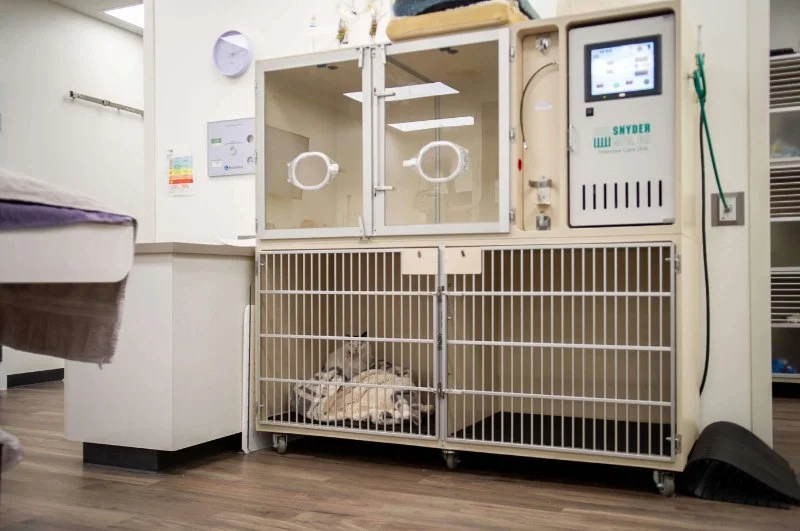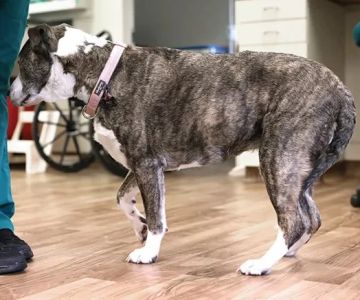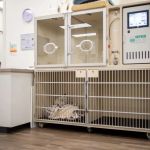
- The Evolution of Pet Recovery Rooms
- Key Design Elements for Pet Recovery Rooms
- Creating a Comfortable Environment for Pets
- Innovative Technology in Pet Recovery
- The Future of Pet Recovery Facilities
The Evolution of Pet Recovery Rooms
In recent years, veterinary care has made significant advancements, not only in medical treatments but also in the design of recovery spaces for pets. Pet recovery rooms, once basic and utilitarian, have now become specialized environments that focus on the comfort and well-being of animals recovering from surgeries or illness. These rooms are designed to provide a calm, controlled environment that promotes healing while reducing stress for the pet.
The evolution of these recovery spaces is largely driven by a deeper understanding of animal psychology and a growing emphasis on creating environments that cater to the unique needs of pets. Modern pet recovery rooms are designed with factors such as lighting, noise reduction, and temperature regulation in mind. The goal is to make the recovery process as stress-free and comfortable as possible, mimicking a safe, soothing space where pets can heal properly.

Higley Groves Animal Hospital
1423 S Higley Rd STE 102, Mesa, AZ 85206, USA
Key Design Elements for Pet Recovery Rooms
When designing a pet recovery room, several factors must be taken into account to ensure a comfortable and effective healing environment. Below are some key design elements that modern veterinary clinics consider when creating these specialized spaces:

Banfield Pet Hospital
EvansvilleVanderburgh CountyIndiana
215 N Burkhardt Rd, Evansville, IN 47715, USA
1. Noise Control
Noise is a major stressor for pets, especially during the recovery process. Animal recovery rooms are now designed with soundproofing in mind to minimize the noise from other animals, equipment, and clinic activities. Soft, soothing background music may even be played to calm anxious pets. Noise control is essential to avoid exacerbating the pet's stress and to promote a healing atmosphere.
2. Comfortable Bedding
The bedding in recovery rooms plays a crucial role in a pet’s comfort and well-being. Soft, orthopedic mattresses and blankets provide support, which is especially important for pets recovering from surgeries or injuries. Bedding is also chosen for its ability to be easily cleaned and sanitized to maintain a sterile environment.
3. Temperature Regulation
Temperature regulation is vital to ensure pets remain comfortable during recovery. Veterinary clinics often use adjustable heating and cooling systems in recovery rooms to maintain an optimal temperature. Some recovery rooms are even equipped with heated floors to keep pets warm, as certain medical conditions or surgeries may cause pets to feel cold more easily.
4. Natural Light and Calming Colors
Natural light is known to have a calming effect on both humans and animals. Many modern pet recovery rooms incorporate windows or skylights to let in natural light, which helps create a more comfortable, home-like environment. Additionally, calming colors like soft blues, greens, and earth tones are chosen for walls and décor to further reduce anxiety and stress.
Creating a Comfortable Environment for Pets
Beyond physical comfort, emotional well-being is also a significant consideration when designing pet recovery rooms. Here are some ways veterinary clinics are ensuring that pets feel as relaxed as possible during their recovery:
1. Personalized Care
Personalized care in pet recovery rooms is essential to address the specific needs of individual animals. Some clinics allow owners to bring in familiar items like their pet's favorite blanket or toy, which can help provide emotional comfort and a sense of familiarity. Having familiar scents and objects can be crucial in reducing stress and promoting healing.
2. Low-Stress Handling
Recovery rooms are often staffed by trained professionals who understand the importance of low-stress handling techniques. These professionals are skilled in managing pets in a way that minimizes fear or discomfort, which is especially important for pets recovering from surgery or trauma. The environment is kept quiet and calm to avoid unnecessary stress during the healing process.
3. Visual and Sensory Stimulation
Incorporating gentle visual and sensory stimulation is another way to promote relaxation. Some recovery rooms feature pet-friendly videos or calming visuals, while others may include aromatherapy options such as essential oils to soothe the animal’s senses. These features can have a positive impact on recovery by calming anxious pets and helping them stay relaxed.
Innovative Technology in Pet Recovery
Modern technology is playing an increasingly important role in the design of pet recovery rooms. Veterinary clinics are integrating advanced technology to monitor pets during their recovery process, ensuring that they are comfortable and receiving the appropriate care. Some innovative technological features include:
1. Monitoring Systems
To ensure that pets are recovering as expected, many clinics now use monitoring systems that track the pet's vital signs, movement, and behavior. These systems provide real-time updates to the veterinary team, allowing them to adjust care if necessary. Monitoring can also alert staff to any potential complications early, ensuring a faster response in case of an emergency.
2. Smart Lighting
Smart lighting systems are increasingly being used in pet recovery rooms to simulate day and night cycles, helping pets maintain a natural circadian rhythm. This can have a positive impact on their sleep patterns, reducing stress and promoting healing. Adjustable lighting also helps create the ideal ambiance for each pet’s specific needs, whether they require a brighter or more subdued environment.
3. Automated Feeding and Medication Dispensers
Automated feeding and medication dispensers ensure that pets receive the correct dosage at the right time, even when staff is unavailable. This technology ensures precision and consistency in care, helping pets recover more efficiently.
The Future of Pet Recovery Facilities
The future of pet recovery rooms looks promising as veterinary clinics continue to embrace new design trends and technology. As pet care evolves, we can expect more emphasis on creating environments that prioritize both physical comfort and emotional well-being. The use of advanced technology and design techniques will likely continue to shape the pet recovery experience, allowing pets to heal in a safe, supportive, and calming environment.
If you're interested in exploring pet care products or learning more about the latest trends in pet recovery facilities, visit Pet & Puppy for expert advice, product recommendations, and services that cater to your pet’s needs.







 Primary Pet Care4.0 (114 reviews)
Primary Pet Care4.0 (114 reviews) Warrick Veterinary Clinic Preventative Care Center3.0 (7 reviews)
Warrick Veterinary Clinic Preventative Care Center3.0 (7 reviews) Banfield Pet Hospital4.0 (179 reviews)
Banfield Pet Hospital4.0 (179 reviews) Lexington Hospital For Cats4.0 (91 reviews)
Lexington Hospital For Cats4.0 (91 reviews) Twin Maples Veterinary Hospital4.0 (1184 reviews)
Twin Maples Veterinary Hospital4.0 (1184 reviews) Vetco Vaccination Clinic4.0 (4 reviews)
Vetco Vaccination Clinic4.0 (4 reviews) How to Teach Your Pet to Enjoy Baths & Grooming: A Complete Guide
How to Teach Your Pet to Enjoy Baths & Grooming: A Complete Guide Managing Chronic Conditions in Pets: Essential Diet, Medication & Lifestyle Tips
Managing Chronic Conditions in Pets: Essential Diet, Medication & Lifestyle Tips How to Tell if Your Pet Is in Pain (When They Can’t Speak)
How to Tell if Your Pet Is in Pain (When They Can’t Speak) Pet Insurance 101: What It Covers & When It Pays
Pet Insurance 101: What It Covers & When It Pays How Pet Recovery Rooms Are Being Designed in Modern Clinics
How Pet Recovery Rooms Are Being Designed in Modern Clinics Explaining Pet Wellness Plans vs Traditional Vet Visits
Explaining Pet Wellness Plans vs Traditional Vet Visits